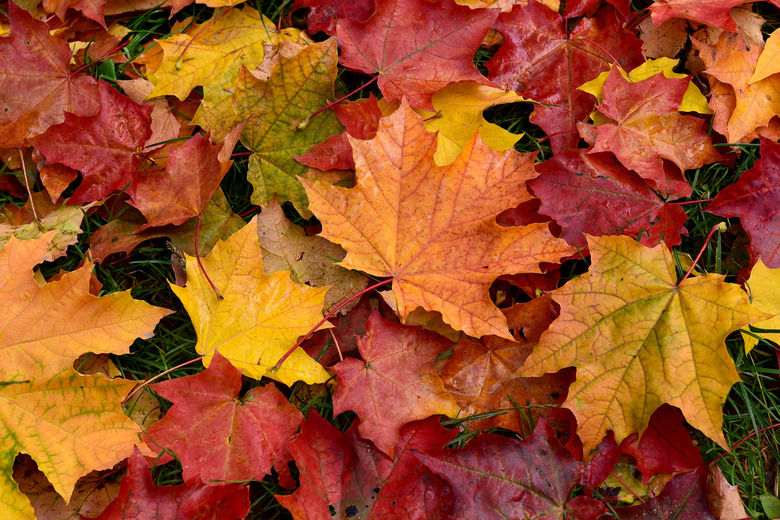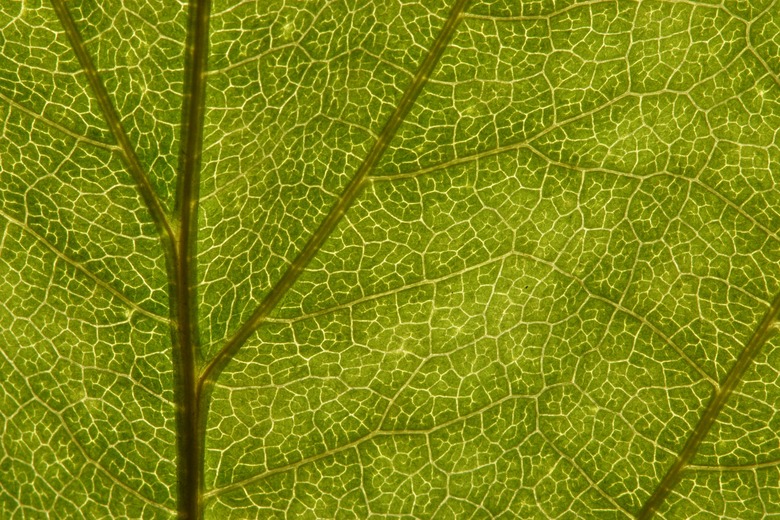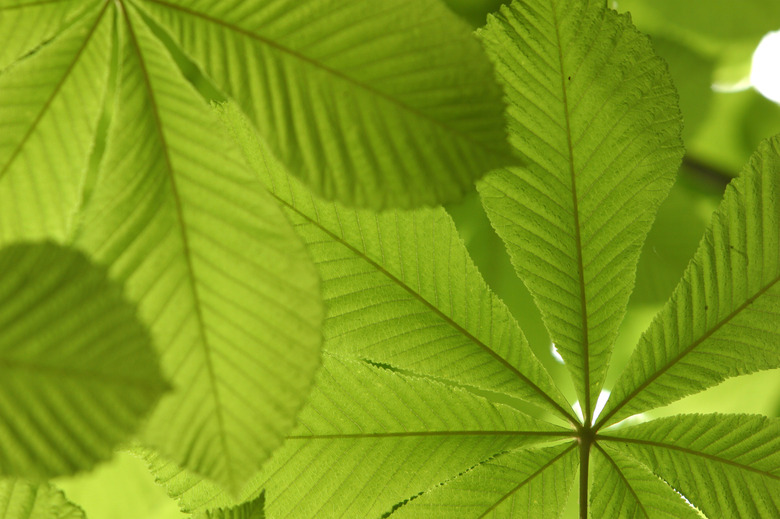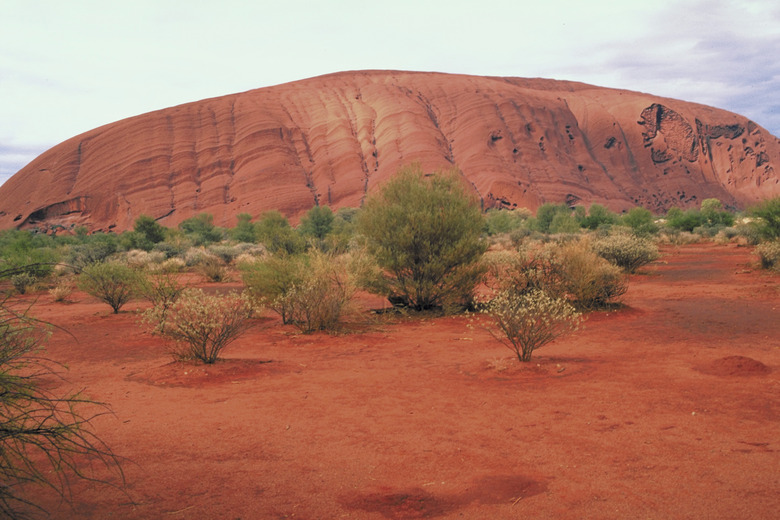Where Does Photosynthesis Take Place?
Photosynthesis, a plant's internal process that converts light energy into food, takes place mostly in the leaves of plants. Plants and trees utilize specialized structures to conduct the chemical reactions necessary to transform sunlight into chemicals the plant can use. Plants also require carbon dioxide to perform initial reactions, which they absorb through tiny pores located across their leaves and stems.
Chloroplasts in Green Plant Cells
Chloroplasts in Green Plant Cells
The most important part of photosynthesis occurs in the chloroplasts. These small photosynthesis factories buried within the leaves house chlorophyll, a green pigment secreted in the chloroplast membranes. Chlorophyll absorbs a wide range of the spectrum of sunlight, giving the plant as much energy as it can for its reactions. The primary section of the light spectrum that chlorophyll doesn't absorb is green, which explains why leaves usually appear as a shade of green. These green chloroplasts reside on the leaf's interior. The epidermis, or the surface of the leaf protects the processes occurring beneath.
Flattened Thylakoids
Flattened Thylakoids
Chloroplasts comprise a number of flattened disks called thylakoids stacked atop each other to form grana. Embedded in the stroma — supportive tissue — of a chloroplast, chlorophyll gets manufactured in the grana, and it's also where sunlight becomes chemical energy used for later processes. This process occurs almost exclusively in the leaves; very few plants produce chlorophyll anywhere but in their leaves.
Dark Reactions
Dark Reactions
The dark reaction doesn't require sunlight to work. This second phase of photosynthesis takes the atoms of the chemical energy created in the thylakoids and changes them into simple sugars that can be used or stored by the plant, depending on its energy needs. This reaction takes place in another section in the stroma. Rarely, certain plants, especially those that live in the desert, store carbon dioxide or other necessary components of photosynthesis in other compartments within the plant structure. This allows them to perform the different steps of photosynthesis even when they cannot open up pores to absorb elements from the air or receive energy from the sunlight.
Cite This Article
MLA
Lacoma, Tyler. "Where Does Photosynthesis Take Place?" sciencing.com, https://www.sciencing.com/photosynthesis-place-5481899/. 17 April 2018.
APA
Lacoma, Tyler. (2018, April 17). Where Does Photosynthesis Take Place?. sciencing.com. Retrieved from https://www.sciencing.com/photosynthesis-place-5481899/
Chicago
Lacoma, Tyler. Where Does Photosynthesis Take Place? last modified August 30, 2022. https://www.sciencing.com/photosynthesis-place-5481899/



